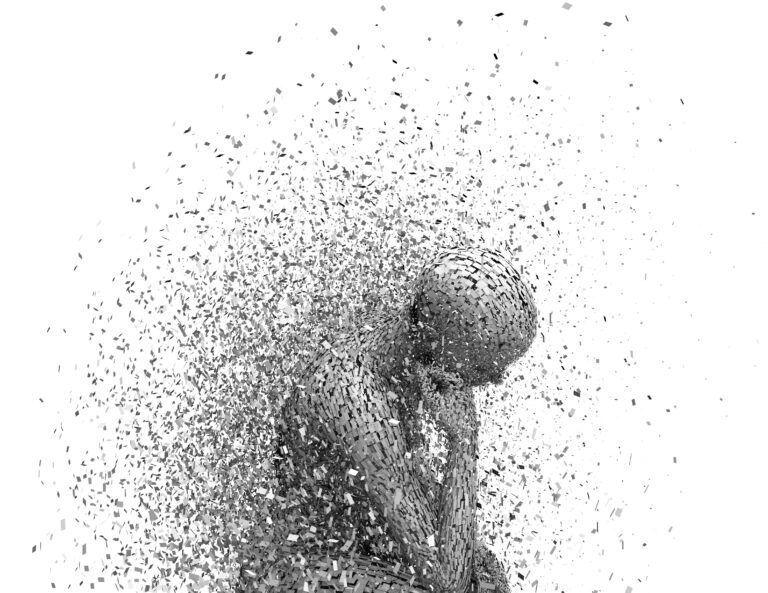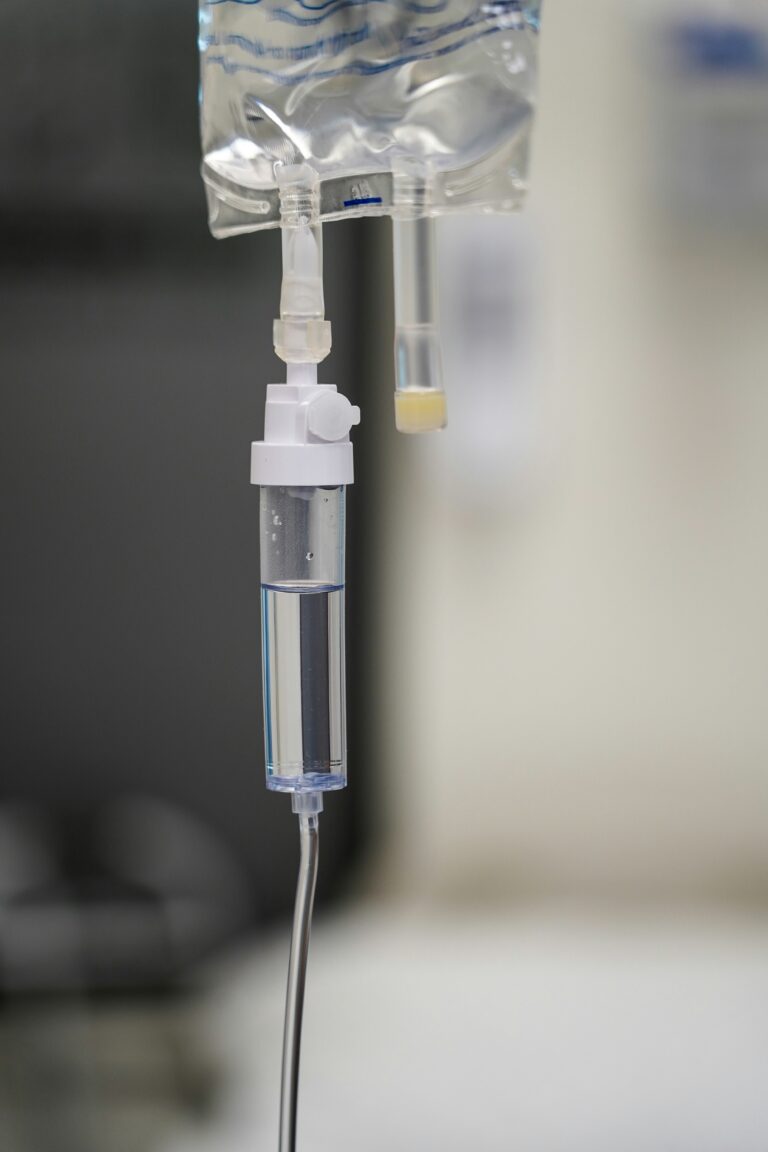What is Bipolar Disorder? The A-Z’s of What It’s Like to Live with Bipolar Disorder
It is sometimes difficult to talk about bipolar disorder (or mental illness). People usually cannot relate, unless they’ve been there before. There really is not enough content about the causes and consequences of having a mental health problem. That said, I am happy to lead the charge for folks with bipolar disorder.
Below, I have compiled the most common questions people ask about bipolar and manic episodes (or mania). I do my best to update it regularly. If you have a question, please drop me an e-mail at john@thebipolarbattle.org
Can bipolar disorder (“BP”) be genetic?
There is a strong genetic sign for those diagnosed with bipolar disorder. Generally, bipolar disorder (“BP”) and other mood disorders run in families. However, it is not predictive of who may or may not have it. Take me, for example. I am not aware of any family members with bipolar disorder. However, other members of my family have received diagnoses of depression, anxiety, and/or psychosis, while others have grappled with addiction.
What causes bipolar disorder?
The cause (or causes) of bipolar disorder are still being studied. In the late 1990s, there was a strong emphasis on the “genetic component” of bipolar disorder. Currently, the consensus is those with BP have a genetic predisposition for bipolar disorder, and an environmental factor triggers it. This environmental factor is an extremely stressful event or situation or an actual trauma.
Is bipolar disorder curable?
Presently, there is no cure for bipolar disorder. However, bipolar disorder can be successfully managed with the right treatment. The right treatment is different for everyone, but the medical model of treatment consists of medication management and therapy.
How does bipolar influence the mind?
A person living with bipolar disorder has their mind wired differently compared to someone without a mental illness. The chemical and biological makeup of someone living with bipolar disorder both influence a person’s moods, energy level, motivation, inner dialogue, ability to cope and handle stress, and how they perceive reality.
Does bipolar affect family and friends?
Left untreated, bipolar disorder can have disastrous and long-lasting effects on both family and friends. It is sometimes difficult for loved ones to fully grasp the battle going on inside the mind of their loved one living with bipolar disorder.
How is bipolar diagnosed and treated?
A medically licensed professional can only diagnose bipolar disorder. “The Diagnostic and Statistical Manual of Mental Disorders” (“DSM”) is “The Bible” among the medical community and is used to diagnose bipolar disorder, along with other psychiatric issues. The diagnostic criteria for bipolar disorder are extremely specific in the DSM.
Extreme episodes or shifts in mood characterize bipolar disorder, alternating between mania (hypomania in type II) and depression. It impacts a person’s energy level, motivation, libido, and overall ability to function.
The treatment of bipolar disorder consists of medication management, going to therapy, developing healthy coping strategies and skills, and living a healthy lifestyle.
What is a manic episode (a.k.a. “mania”)?
Euphoric Mania
Going into a manic episode is like an enormous wave building up in the ocean. It starts slowly and gets bigger from there. My thoughts are the same way. They speed up. I feel electric energy in my body. Everything feels amazing, and I feel everyone deserves to hear my ideas, so I talk to everyone and everybody who will listen—even the ones who do not want to listen!
My mind goes so fast that I cannot get ahold of my thoughts. I must start talking fast and feel almost pressured because if I do not voice my thoughts, they fly right by to the next one. These are called racing thoughts. The thoughts are going too fast. I do not feel like I have much of a moral compass because I cannot sit with my thoughts and think since they come and go in a heartbeat.
When thoughts go that fast, you cannot sleep. I end up writing pages and pages while everyone is asleep. It is hard to explain the utter elation I feel toward the start of a manic episode – it is like being inside joy.
Why is it Called Euphoric?
This whole experience is called a “euphoric” mania by the medical community. It seems all exciting and thrilling, right? Well, that is part of it. (Before I go on, please remember that everyone who has bipolar disorder undergoes their own experience with mania. This is simply my perspective. You can find a good portion of the symptomology of my experience in others’ journeys, as well.)
After I have not slept in days, while my mind is racing, I am going 1,000 miles per hour, and I am feeling great. Then things change. The past few manic episodes I have experienced are like the ones I am describing to you.
Dysphoric Mania
Eventually, my “fun-and-exciting euphoric” mania switches over to a “dysphoric” mania. Here, things fall apart for me. See, during the revved-up and exciting part, I write, draw, work out, and perform other physical activities more than when I am stable. Now, with dysphoric mania, my mind is almost numb. Thoughts continue to spiral out of control, and the sleepless nights continue.
The muffled noise I heard in the background is really a voice. Not only do I hear one, but I hear two, three, and sometimes more. The walls move, and dark figures that are not really there emerge. I must stop for a minute because this can be utterly dreadful for me.
Are there signs and symptoms of mania?
The signs and symptoms of mania present differently for each individual. However, there are some common red flags that you can keep your eyes open for. These include:
- You require less and less sleep, but feel rested and recharged.
- Your thoughts race, going from one topic to another.
- People notice you become more talkative—also known as “pressured speech.”
- Increase in libido—hypersexuality.
- Spending sprees.
- Starting many projects.
- Impaired judgment.
- Self-medicating.
- Psychosis.
Can people with bipolar disorder live a “normal” life?
With the right treatment and support, those living with bipolar disorder can live a full and productive life.
What are the four different types of bipolar?
Bipolar Disorder Type 1
Bipolar disorder type 1 is defined by manic episodes that last at least seven days. It can be less than seven days if the manic episode is so severe that it warrants immediate hospitalization. To be properly diagnosed with type 1, the individual must have experienced at least one manic episode.
It is not a diagnostic requirement of type 1 to experience an episode of depression. However, those living with type 1 generally do experience depressive episodes. They typically last two weeks or longer.
It is possible for an individual to experience a “mixed-affective state.” A combination of symptoms from both mania and depression characterizes a “mixed episode,” a “mixed-affective state”.
For example, an individual can present with racing thoughts, hypersexuality, and increased goal-oriented activity. These are all symptoms of mania. In addition, this person can have feelings of hopelessness, low self-worth, and suicidal ideation.
In terms of completed suicides, a mixed episode is extremely dangerous. The person experiencing a mixed episode can feel suicidal. However, they can also have increased energy and motor agitation, giving the individual the ability to better follow through with their suicidal intent.
Bipolar Disorder Type 2
Periods of depression and hypomania define bipolar disorder type 2.
Generally, depressive periods last longer and are more frequent with type 2, compared to type 1.
Hypomania is a less severe form of mania, but the symptomology between mania and hypomania is the same. A hypomanic episode is just less intense compared to a manic one.
For example, an individual experiencing hypomania may have racing thoughts, increased goal-oriented activity, and an increased sex drive like type 1. However, these symptoms may not impede the individual’s daily functionality like a full-blown manic episode.
Without proper treatment, those experiencing hypomania can escalate to mania and severe depression.
Cyclothymic Disorder (or “Cyclothymia”)
Cyclothymic disorder, or “cyclothymia,” is defined by periods of hypomanic and depressive symptoms lasting for at least two years in adults. For children and adolescents, the time is one year.
In cyclothymic disorder, symptoms do not meet the diagnostic criteria for a hypomanic episode and depressive episode.
Please note that cyclothymic disorder is different compared to rapid-cycling bipolar. Rapid cycling is diagnosed when an individual experiences four or more separate episodes of hypomania, mania, or depression within a one-year-period.
Other Specified and Unspecified Bipolar and Related Disorders
Here, the individual experiences bipolar symptoms that do not match those of bipolar type 1, bipolar type 2, or cyclothymic disorder.
The spectrum of bipolar disorder is based on the severity of symptoms. Each type of bipolar is based on its own spectrum.
Does bipolar disorder cause hallucinations?
In severe cases, yes, those living with bipolar disorder type 1 can experience hallucinations. Those living with bipolar disorder type 1 are more likely to have “auditory hallucinations” as opposed to “visual hallucinations.”
Is there a good way to prevent mood swings?
There is no cure for bipolar disorder and therefore no way – or guarantee – that you can prevent mood swings, but you can successfully manage it with the right treatment. As time goes on, and you are consistent in adhering to your treatment, the severity of your mood episodes will lessen, and the time between episodes will grow longer.
What is a mood stabilizer, and why does it help?
The purpose of a mood stabilizer is to stabilize the mood of the patient. Sometimes, if a patient has a severe case of bipolar disorder, they will have to take more than one mood stabilizer. Some medications work on different pathways of the brain, and that is the case with mood stabilizers.
Lithium was one of the first medications to be used as a mood stabilizer. It is still used today and also as a natural salt. Like some of the other medications used to treat bipolar disorder, lithium needs continual blood monitoring.
“Anti-convulsants” are used as mood stabilizers. They have been shown to help some patients with bipolar disorder. These anti-convulsants are used to treat patients with seizures, as well.
Do bipolar medications have side-effects?
All medications have the potential for side-effects. The medications used to treat bipolar disorder are no different. In reality, there are no “common” side-effects. The different medications used to treat bipolar disorder are from different classes of medication. Each class of medication contains a different side-effect profile. For example, these classes of medication include:
- Mood stabilizers.
- Anti-psychotics.
- Sleep aids.
- Anti-depressants.
- Anti-anxiety.
- Stimulants.
- Other “off-label” medications.
It is important not to discount a medication because of potential side effects. You can give the same medication to two unique individuals, and they will react differently to the prescribed medication. For example, I was prescribed a medication and experienced weight gain right away. A friend of mine was prescribed the same medication, and they lost weight.
Which one is “worse”: bipolar disorder type I or type II?
Bipolar type I is the most severe form of bipolar, followed by type II, and lastly cyclothymic disorder, in terms of severity of symptoms. Having said that, one type of bipolar disorder is not “easier” to live with than another. It does not matter the “type” of bipolar you are diagnosed with—it is still bipolar disorder.
What is the “best” medication to treat bipolar disorder?
Unfortunately, there is no “best” medication to treat bipolar disorder. Everyone is biologically unique. You can give the same medication to two different patients, and each patient can react differently. In addition, these two individuals can experience distinct and separate side effects. For example, after trying a specific medication, patient A experiences weight gain while patient B experiences weight loss.
Finding a medication that can successfully treat your bipolar disorder is a matter of trial and error. It is easy to feel like a guinea pig.
I have a friend who found a medication that stabilized them on their first try. For others, like myself, it can take considerably longer. It took me close to 10 years to find the right tolerable “cocktail” of medications. Some people find a medication, or cocktail of medications, within a few weeks or a few months. Again, everyone is different.
Try your best to be patient and make sure you find a prescribing medical professional whose treatment philosophy is in line with your own values.
How do you help your partner who has bipolar disorder?
Communication and patience are the two best tools to use when your partner is living with bipolar disorder.
Communication is important for every relationship, whether or not you have bipolar disorder. However, it becomes absolutely essential when your partner lives with a mental illness. Give your partner permission to be completely open with you, judgment aside, and ask them for the same in return. It is important to talk through feelings, thoughts, and urges. Some of it may be difficult to hear, but remember, bipolar disorder can take control over a person’s feelings, thoughts, and urges–and talking them through before they become an issue can save your relationship.
Patience is the other tool I suggest because your partner will not always act rationally or with common sense. This is no reflection on you or your partner but on your partner’s bipolar disorder. In fact, it may help to see your partner as a completely separate entity from their illness. I am not saying to give your partner a hall pass to do whatever they want, but it may give you a better perspective to see that what is going on with your partner is the illness itself, and not them as an individual.
How can you beat bipolar disorder and win the war with your mind?
First, you need to accept the fact that you have bipolar disorder. It is an illness that requires treatment. From there, find the care of a medical professional to monitor your medication and a therapist to help guide you along your journey, and adopt both a healthy lifestyle and mindset. Read This War Within My Mind to learn how to successfully manage bipolar disorder once and for all. You can also listen to the audiobook of This War Within My Mind and the podcast for The Bipolar Battle.
Call To Action
Want a warrior mindset? Read a free preview of This War Within My Mind by John Poehler.
Before you go, share this article so your friends, and family can learn how bipolar disorder works.







